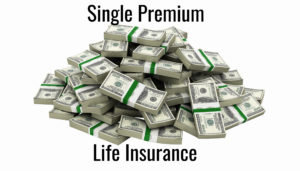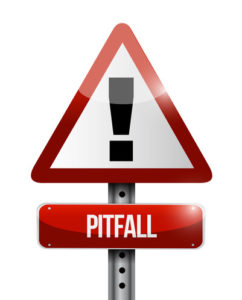Whether you already have life insurance or you’re thinking about obtaining a whole or universal life policy, cash value is likely to impact your financial planning.
Indeed, if you want to fully appreciate the utility of life insurance as a financial planning tool, you need a good understanding of how cash value works and how it can be accessed or leveraged to build wealth.
Surrendering a policy for cash (or “cashing out” life insurance) is only one of several potential options.
This article takes a look at some of the most commonly asked questions when it comes to cashing out life insurance, withdrawing your cash value and taking out a life insurance loan.
What is the Cash Value of a Life Insurance Policy?
When you purchase a whole life or universal life policy, you’re getting two principle benefits.
First, you get the guaranteed death benefit. When you die, the insurance company will pay out the policy proceeds to your designated beneficiary.
Whole and universal life differ from term insurance in that, absent a policy lapse for non-payment of premiums, the death benefit is guaranteed to pay out regardless of how long you live.
Term policies, though, eventually expire, so most term life policies never result in a payout from the insurer.
The second principle benefit of permanent policies is that they accumulate cash value.
Cash value is basically an account linked to a life insurance policy that grows the longer the policy stays in place.
Because you can access the funds with little difficulty, cash value is a legitimately liquid financial asset during life—not just the nominal present value of the right to a future death benefit.
The way it works is that premium payments are split between the two benefits—some towards the insurer’s cost of underwriting the death benefit and some toward cash value.
Cash value steadily increases with each payment, and the wealth held as cash value also earns guaranteed interest.
It usually takes a couple years to pick up steam, but, as a policy matures, the return rate on the paid-in premiums continuously improves as policy growth compounds.
Cash Value and Death Benefit Linked
Though a policy’s cash value and death benefit are distinct, the two benefits are linked.
When a death benefit is triggered by the insured’s death, the two are effectively merged—the insurance company pays the death benefit (and not cash value) to beneficiaries.
And, along the same lines, if you cash out a policy’s cash value, the insurance company no longer has to pay the death benefit.
Building cash value in a life insurance policy is analogous to building up equity in a home with a mortgage.
With each mortgage payment, equity builds up.
As long as you own the property, the equity is a financial asset you can tap.
But, if you sell the home, the equity is no longer an asset. And if you sell the home after paying off the mortgage, you receive the sale price—not the sale price plus the equity.
Does All Life Insurance Have Cash Value?
As a general rule, permanent life insurance policies (such as whole life or universal life) accrue cash value, but term life policies do not.
With term coverage, there is no guaranty of an eventual payout. In fact, most term policies expire without paying anything.
This is why term life is cheaper than whole life.
Premiums paid into the vast majority of term insurance policies that never pay out effectively subsidize the small minority of term policies that do pay a death benefit.
There are a few exceptions to the general rule worth mentioning.
Some guaranteed universal life policies and final expense policies (a/k/a “funeral” or “burial” insurance) are permanent policies but do not accrue cash value—or accrue very little.
Those policies are designed for applicants who want a death benefit certain to be available at death and who have no intention of ever accessing cash value.
A convertible term life policy does not have cash value but can be converted into a policy with cash value.
Convertible term policies include an option that, if exercised by the policyholder, turns existing term coverage into whole or universal life with cash value.
Convertible term life is well-suited to individuals who need a higher death benefit and lower premiums over a short-term period but want to take advantage of cash-value accumulation over the long run.
How Does Cash Value Grow?
As a savings vehicle, cash value has quite a few advantages.
Whole life insurance policies grow at guaranteed interest rates usually much better than savings accounts.
Universal life policies, specifically IUL insurance, typically links growth to investment performance or an equity index, usually with guaranteed minimum return rates.
Participating policies issued by a mutual insurance companies may also receive dividends, which can be applied toward cash value and further add to the growth potential.
Tax-Favored Growth
Life insurance policy growth is tax-deferred.
You don’t owe any income tax on cash-value growth until you actually receive the money out of the policy.
And cash value that has grown tax-deferred over the years can be accessed in multiple ways, including by surrendering the policy for cash to help fund retirement.
If you never withdraw the growth, you won’t ever have to pay income tax on it.
Life insurance proceeds paid out as a death benefit are not taxable income to a beneficiary, even if growth and dividends increase the ultimate payout.
Safe, tax-deferred growth makes life insurance helpful as a retirement planning asset.
There are no contribution limits like with a 401k or IRA, so you can let cash value accumulate and compound for years and years, supplemented by dividends and without any reductions for income or capital gains taxes.
With most cash value life insurance policies, you can even elect to pay additional premiums to increase cash value early on and substantially expand long-term growth potential.
7 Year Test
Supplemental premium payments are subject to a cap known as the seven-year test.
Under IRS rules, to qualify as “life insurance” (and therefore benefit from tax-deferred growth), the premiums paid into a policy over the initial seven-year period cannot exceed the payments that would have been required to fully pay for the policy’s benefits within that same seven-year period.
If a policy fails the seven-year test, it is treated as a “modified endowment contract.”
Modified endowment contracts can still be useful financial planning tools, but you can’t defer income tax liability on the growth.
What Does it Mean to ‘Cash Out’ Life Insurance?
If you reach a point where you no longer want or need life insurance—or just decide you would rather receive a policy’s current value now rather than a future death benefit—you can cash out life insurance in exchange for a present payment from the insurance company.
When you decide to cash out your life insurance, you submit a form to the insurance company declaring that you are electing to surrender the policy for cash.
The insurance company then sends you a check for the policy’s surrender value, which you can usually receive within a week or so.
After surrendering a policy for cash, you no longer have a right to receive the future death benefit or an obligation to pay future premiums.
One way to think of cash value is as the amount of the future death benefit that is currently vested with the policyholder.
For instance, if a whole life policy with a $100,000 death benefit has a current cash value of $20,000, then the policyholder essentially has a current vested right in twenty percent of the policy proceeds.
When you cash out, you’re opting to receive the currently vested amounts now instead of the contingent death benefit in the future.
Withdrawals or Loans
If you prefer to keep a policy in place, you can access a portion of its cash value through partial withdrawals or policy loans without canceling the coverage.
Partial withdrawals and policy loans that aren’t paid back reduce the available death benefit, but the beneficiary still has a right to receive the proceeds (minus any applicable reduction) upon the insured’s death.
What’s the Difference Between ‘Cash Value’ and ‘Surrender Value?’
The “cash value” of a life insurance policy is the combined value—including premiums applied toward savings, growth, and any applicable dividends—that has accumulated within the policy.
“Surrender value” is the amount the insurance company would pay you today if you elected to surrender the policy and cash out.
Surrender Fees
Cash value and surrender value are theoretically the same except that policies often impose surrender fees for cashing out too early.
Typically, surrender fees are expressed as a percentage of cash value and are highest in the first couple years after a policy is issued.
As a policy matures, surrender fees gradually phase out over time.
Once a policy has been in place long enough, surrender fees are no longer applicable.
And, at that point, the policy’s “cash value” and “surrender value” are the same dollar amount.
The length of time before surrender fees are completely phased out varies between policies and companies but is normally somewhere around ten years.
Death Benefit vs Face Value
Another important term, “face value,” refers to the amount of the death benefit payable to the beneficiary upon the death of the insured.
For the most part, the actual death-benefit payout and the face value will be the same.
However, if there are outstanding policy loans or the policyholder has made partial withdrawals from cash value, the actual amount paid when the death benefit is triggered may be less than the policy’s face value.
Or, if the policyholder has reinvested dividends, made supplemental premium payments, or if the policy has continued growing past maturity, the death benefit will probably be greater than the initial face value.
How Can You Use a Policy’s Cash Value Other than Surrendering it for Cash?
The right to surrender a policy for cash is an important benefit of permanent life insurance.
However, an outright surrender is not always the best option.
Other alternatives for tapping cash value include partial withdrawals (where you take out some but not all cash value), policy loans, applying cash value toward premiums, exercising a “reduced paid-up” option, or converting cash value into an annuity.
Life insurance Loan
Life insurance loans are low-interest loans from the insurance company secured by a policy’s cash value.
Repayment is more or less discretionary, but if you don’t eventually repay a policy loan, the loan balance is deducted from the death benefit.
Depending on the insurance company, policy loans often don’t affect cash-value growth.
So, you’re still earning interest on the entire cash value, even the amount serving as collateral for the loan.
In effect, the insurer is charging you interest on the loan funds but is also paying you interest on the cash value securing the loan.
Due to low interest rates and flexible repayment, policy loans can be a good way to obtain cash to acquire other appreciating assets, or to cover an emergency expense.
Pay Premiums
When you apply cash value toward premiums, you are using value accumulated within a policy to keep the policy in place without directly paying in premiums.
This can be a good option if you’re temporarily short on cash.
However, you’re reducing the policy’s current cash value, growth potential, and death benefit.
And if you over-rely on the approach, you could risk a policy lapse if cash value decreases to where it’s insufficient to cover premiums.
Reduced Paid-Up
A reduced paid-up (RPU) option lets you avoid the obligation to pay any future premiums in exchange for agreeing to accept a lower future death benefit.
Basically, the new death benefit is measured as the face value of a policy that would have been paid-in-full by the total premiums paid thus far.
An RPU option can be helpful if you want to trim your budget and no longer need as high of a death benefit, but you want to keep at least some coverage in place.
Annuitize
When you annuitize a policy’s cash value, the total value stored in the policy is treated as a premium payment for a new annuity.
You give up the right to the future death benefit and, instead, the insurance company makes regular payments to you for the rest of your life (or for the term of the annuity if not a lifetime annuity).
This approach allows the wealth stored in the policy to continue growing tax-deferred in the annuity, and you secure a consistent supplemental income stream to help fund retirement.
What are the Tax Consequences of Cashing Out a Life Insurance Policy?
Cash withdrawn from a life insurance policy are only taxable to the extent the money received represents policy growth.
Stated differently, all amounts you withdraw are untaxed up to the total amount of premiums thus far paid into the policy.
Any amounts received beyond the total premiums paid are taxable growth.
The IRS views a life insurance policy’s “tax basis” as the total premiums paid in, minus any prior premium withdrawals or dividends received in cash.
Example
So, if you surrender a policy for $20,000, and you have paid premiums totaling $15,000 and not previously withdrawn principal from the policy or taken dividends in cash, the tax basis is $15,000 and the taxable amount of the surrender value will be $5,000.
FIFO
Partial withdrawals are taxed according to the “first-in, first-out” (FIFO) accounting principle.
Under FIFO, withdrawals are assumed to come first from premiums and, only after all premiums have been withdrawn, then from growth.
Thus, partial withdrawals are not taxable income until you reach the point where you’ve withdrawn more than the total premiums paid in, i.e. your basis in the cash value policy.
1035
If, instead of surrendering a policy for cash, you elect to convert it into an annuity through a 1035 exchange, you will have to pay income tax on the policy growth (and the subsequent growth in the annuity), but only when the money is actually paid to you by the insurance company as annuity payments.
With a lifetime annuity, this means that the income tax liability is spread out over the rest of your life expectancy, and the wealth stored in the annuity and not yet paid out continues growing tax-deferred until distributed.
Conclusion
Cashing out life insurance is often regretted by those who consider what their policy would be worth 10 or 20 years later.
If you currently are considering cashing out your life insurance or you would like to learn more on why cash value life insurance might be a good option for you, please give us a call today for a complimentary strategy session.





